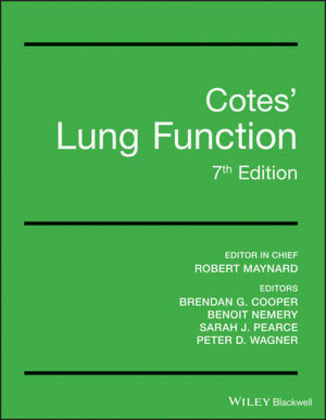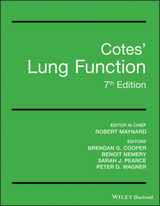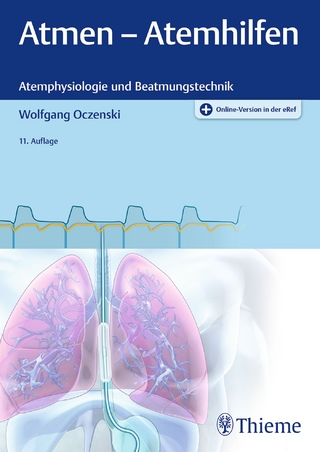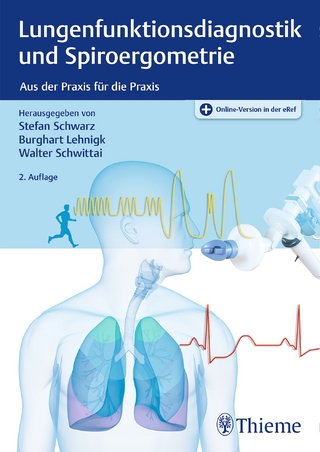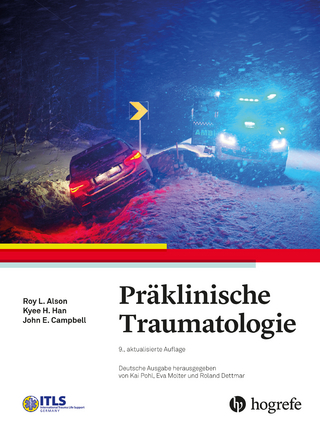Lung Function
John Wiley & Sons Inc (Verlag)
978-1-118-59735-4 (ISBN)
- Titel z.Zt. nicht lieferbar
- Versandkostenfrei innerhalb Deutschlands
- Auch auf Rechnung
- Verfügbarkeit in der Filiale vor Ort prüfen
- Artikel merken
Lung function assessment is the central pillar of respiratory diagnosis. Most hospitals have lung function laboratories where patients are tested with a variety of physiological methods. The tests and techniques used are specialized and utilize the expertise of respiratory physicians, physiologists, and technicians.
This new edition of the classic text on lung function is a theoretical textbook and practical manual in one that gives a comprehensive account of lung function and its assessment in healthy persons and those with all types of respiratory disorder, against a background of respiratory, exercise, and environmental physiology. It incorporates the technical and methodological recommendations for lung function testing of the American Thoracic Society and European Respiratory Society.
»Cotes' Lung Function«, 7th Edition is filled with chapters covering respiratory surveys, respiratory muscles, neonatal assessment, exercise, sleep, high altitude, hyperbaria, the effects of cold and heat, respirable dusts, fumes and vapors, anesthesia, surgery, and respiratory rehabilitation. It also offers a compendium of lung function in selected individual diseases and is filled with more diagrams and illustrative cases than previous editions.
- The only text to cover lung function assessment from first principles including methodology, reference values, and interpretation
- Completely re-written in a contemporary style—includes user-friendly equations and more diagrams
- Covers the latest advances in the treatment of lung function, including a stronger clinical and practical bias and more on new techniques and equipment
- Keeps mathematical treatments to a minimum
»Cotes' Lung Function« is an ideal guide for respiratory physicians and surgeons, staff of lung function laboratories, and others who have a professional interest in the function of the lungs at rest or on exercise and how it may be assessed. Physiologists, anthropologists, pediatricians, anesthetists, occupational physicians, explorers, epidemiologists, and respiratory nurses should also find the book useful.
John Cotes, PhD, (deceased), was a respiratory physiologist who played a key role in the conquest of Everest in 1953. He also played prominent roles in the European Respiratory Society, the Thoracic Society, and the Association of Respiratory Technicians and Physiologists, and was an honorary fellow of the Faculty of Occupational Medicine.
Robert L Maynard CBE FRCP FRCPath FFOM, is an Honorary Professor of Environmental Medicine at the University of Birmingham in Birmingham, UK.
Sarah Pearce, MD, is a Respiratory Nurse Specialist at RSCH (Royal Surrey County Hospital NHS Foundation Trust’s Respiratory Nursing Team) in Guildford, UK.
Benoit Nemery de Bellevaux, MD, PhD, is Professor of Toxicology & Occupational Medicine for the Faculty of Medicine at the Department of Public Health in K.U.Leuven, Belgium.
Peter D. Wagner, MD, is Distinguished Professor of Medicine & Bioengineering at the University of California in San Diego, CA, USA.
Brendan Cooper M.Sc., PhD C.Biol., is Consultant Clinical Scientist in Respiratory and Sleep Physiology at University Hospital Birmingham and holds an Honorary Professorship in Respiratory & Sleep Physiology at the University of Birmingham, UK.
Preface
Section I: Introduction
1 How we came to have lungs and how our understanding of lung function has developed.
Section II: Foundations
2 Getting started.
3 Development and functional anatomy of the respiratory system.
4 Body size and anthropometric measurements.
5 Numerical interpretation of physiological variables.
6 Basic terminology and gas laws.
7 Basic equipment and measurement techniques.
8 Respiratory surveys: epidemiological methods.
9 The application of analytical technique applied to expired air as a means of monitoring airway and lung function
Section III: Physiology and measurement of lung function.
10 Anatomy and function of the thoracic cage and respiratory muscles.
11 Lung volumes.
12 Lung and chest wall elasticity.
13 Forced ventilation volumes and flows.
14 Theory and measurement of respiratory resistances.
15 The control of airway function and the assessment of airway calibre
16 Distribution, measurement and inter-relationship between ventilation and perfusion
17 Transfer of gases into the blood of alveolar capillaries.
18 Transfer factor for CO and NO.
19 Oxygen: uptake and transport in the blood
20 Carbon dioxide: gas exchange and acid base balance
21 Control of respiration.
22 Breathing sensation
23 Breathing function in newborn babies
Section IV: Normal variation in lung function
24 Normal lung function from childhood to old age.
25 Reference values for lung function in white (Caucasian) children and adults.
26 Reference values for lung function in non-Caucasians.
Section V: Exercise
27 Physiology of exercise and effects of lung disease on performance.
28 Exercise testing and interpretation, including reference values.
29 Assessment of exercise limitation, disability and residual ability.
30 Exercise in children
Section VI: Breathing during sleep
31 Breathing during sleep and its investigation.
Section VII: Potentially adverse environments
32 Hypobaria, high altitude, aviation physiology and medicine
33 Immersion in water, hyperbaria and hyperoxia including oxygen therapy.
34 Effects of cold and heat on the lung.
Section VIII: Lung function in clinical practice.
35 Strategies for assessment of lung function.
36 Patterns of abnormal lung function in lung disease
37 Lung function patterns in asthma, chronic obstructive pulmonary disease and lung fibrosis.
38 Lung function in specific respiratory and systemic diseases: a compendium.
39 Pulmonary rehabilitation.
40 Lung function in relation to surgery, anaesthesia and intensive care
Index
| Erscheinungsdatum | 31.12.2019 |
|---|---|
| Verlagsort | New York |
| Sprache | englisch |
| Maße | 216 x 279 mm |
| Gewicht | 666 g |
| Einbandart | gebunden |
| Themenwelt | Medizinische Fachgebiete ► Innere Medizin ► Pneumologie |
| Naturwissenschaften ► Biologie | |
| ISBN-10 | 1-118-59735-4 / 1118597354 |
| ISBN-13 | 978-1-118-59735-4 / 9781118597354 |
| Zustand | Neuware |
| Haben Sie eine Frage zum Produkt? |
aus dem Bereich
